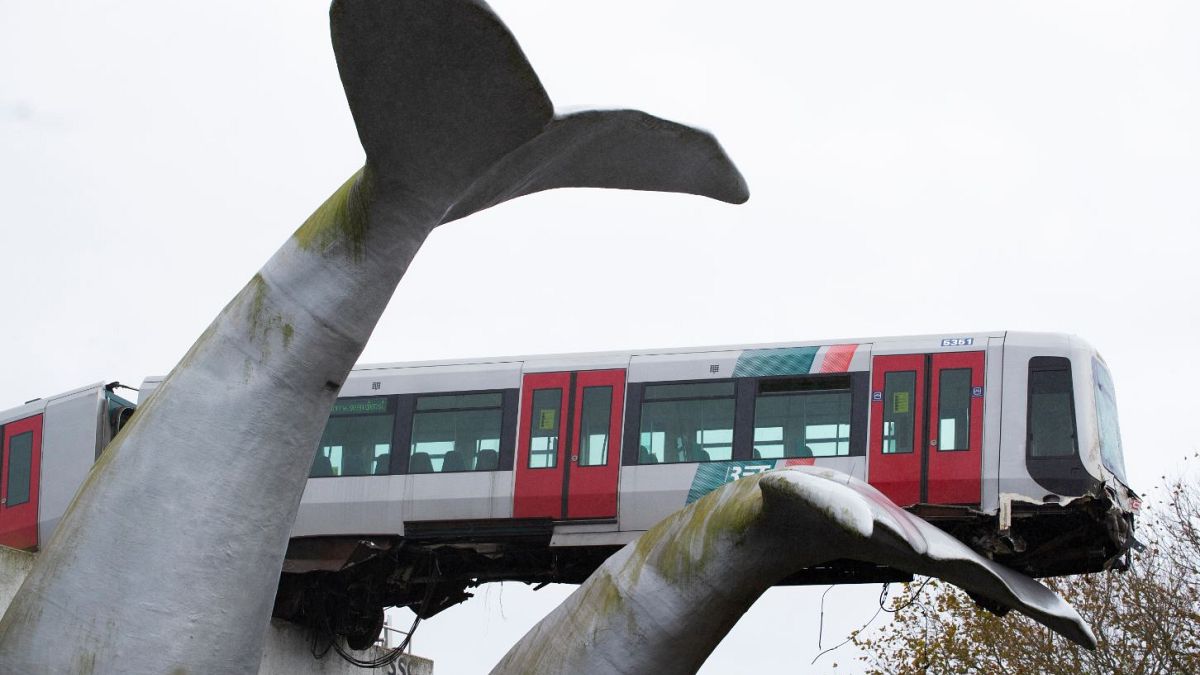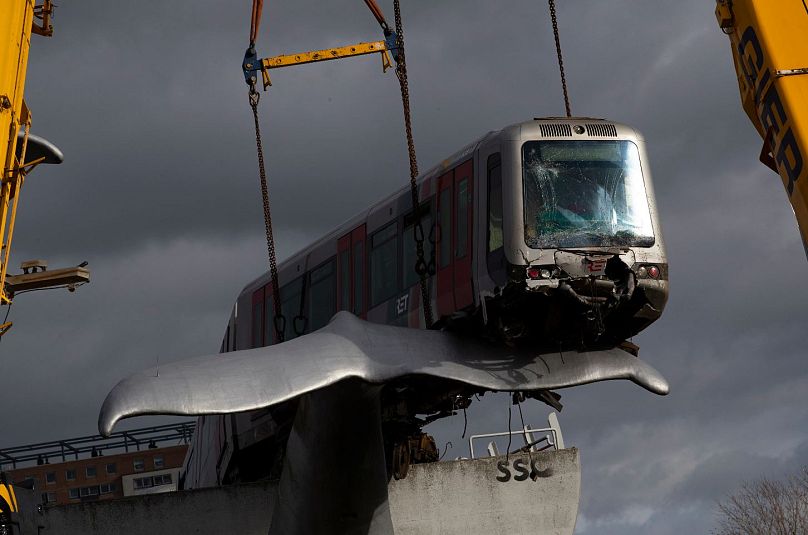An underground train that miraculously landed on a giant whale tail sculpture in the Netherlands derailed due in part to speed, an official report has said.
An underground train that miraculously landed on a giant whale tail sculpture in the Netherlands was going too fast, according to a new official report.
The train was saved by the structure after crashing through the barriers of an elevated section of track in Spijkenisse, near Rotterdam, in November 2020.
Instead of crashing into the water ten metres below, the leading metro train was left hanging spectacularly in the air, perched on the silver metal whale's tail.
The driver of the metro, who was alone on board, was unharmed.
According to an investigation into the cause of the accident, the train was travelling at a speed of 57 km/h. The speed limit was 35 km/h.
Rain and the driver's reaction time were also found to be factors.
"The study shows that we failed on a number of points," said Maurice Unck, managing director of RET, the company responsible for public transport in the city and metropolitan area of Rotterdam.
"Immediately after the accident, we made it technically impossible for a similar accident to happen again, the lane in question was taken out of service," he added in a statement.
The driver, who was accused of braking too late, was given a reminder of instructions, the company said, and was dismissed, according to local media.
The sculpture, which consists of two giant whale tails emerging from the water, remains in a park under the elevated railway line.
Why was the whale sculpture originally built
20 years ago, Hans Muller, Peter Globevnik, and Eric van Uden completed the ‘Whale Tails’ sculpture which sits at the end of the metro line in Spijkenisse, a suburb of Rotterdam in the Netherlands.
They used a pioneering engineering technique to solve a problem with the Dutch climate at the time.
With a background in naval architecture, Muller set out to solve the issue of strong Dutch winds in the coastal town of Rotterdam. The shape of the tails means the structures are ideal for controlling harsh wind in the area and they are still standing two decades later.
At only 6 mm thick, it is extraordinary that the tails were able to hold up a 20 ton train engine. In an interview with the Dutch broadcasting corporation (NOS), Rotterdam city architect Maarten Struijs said that the incident shows how art and science can come together to achieve a “miracle.”

